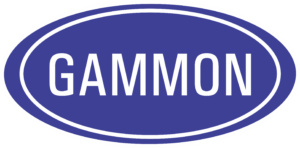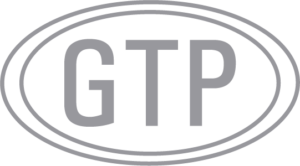NOTE: This article was originally published as GamGram No. 25 but was repositioned in 1996 because No. 13 had been expanded in several revisions to deal with new interpretations of membrane tests. It now seems logical to make the “interpretation” article come after this article. Therefore, numbers 13 and 25 have been switched.
Once upon a time, the world’s airlines and oil companies discovered that keeping jet fuel clean for turbine powered aircraft was very difficult The avgas they had been using was extremely easy to keep clean. The modern 2-stage filter separator was developed to replace the ancient hay pack (excelsior dehydrator). An entire science evolved – and almost everyone disagreed with one another on how fuel should be handled. Everyone argued to his own benefit. It was a confusing period of time.
A method was needed to find if the fuel had been contaminated with dirt. To find how dirty the fuel was, a measured sample was passed through a pre-weighed filter membrane (originally made by Millipore Corp.- – hence, the “Millipore” test). The laboratory weighed the membrane again after a sample of fuel had passed through to determine the weight of dirt. Of course, the answers came back from the laboratories long after the fuel was burned in an engine. A bad report was something to be unhappy about but there was nothing you could do about it.
One day, someone noticed that some membranes were of a darker color than others. The idea of a visual color rating had been born.
At first, there were dreams of being able to correlate a color to the weight of dirt collected. It failed to be consistent but it was obvious that the method was very effective in revealing a change – showing the people at the airport that something had happened that should be investigated.
Several oil companies developed color charts in the 1960’s which their employees and customers used at the various terminals and airports. When the filter membrane test was run, the results of the color rating could be reported to a supervisor thousands of miles away. He knew immediately the color of the filter membrane because he had a color rating chart that was exactly the same as the one that his employee used in rating the membrane. The color rating method became a means of communicating.
The problem was that each oil company had a different set of color standards and this made it impossible to inter-communicate because the airline customer had to deal with different fuel suppliers at different stations.
Fortunately for everyone concerned, a standard color chart was developed within ASTM that became acceptable to both the ASTM and the Institute of Petroleum. This occurred in the later 1960’s. The specifications for the chips in the color rating booklet are published in the ASTM/IP Method D2276 in Appendix X1. The entire industry (airlines and oil companies) now uses the standard color ratings.
This would be a nice ending to our story but we are sorry to say that everyone did not live “happily ever after”. What happened was that each of the oil companies and airlines established different test volume standards. For example, 1 gallon, 1½ gallons, 3 gallons and 5 gallons.
Some people have said that it was all right to pump as bad as a number 5 into an airplane. Others would not put anything darker than a number 2 into an airplane. This situation lead to the development of ASTM Recommended Practice D3830. That publication specified a test volume of fuel (10 litres), it also established good sound procedures for performing the test. It stated specifically that membranes should be rated dry. This had always been a big argument because wet membranes are almost always darker than dry membranes. As of 1995, the step by step procedure of the now obsolete D 3830 was printed as Appendix X1 and Annex A2 of Method D2276. As of the year 2002, the test volume was standarized at one US gallon or 5 liters.
Why is it that the Method does not specifically state that there is a number limit beyond which the fuel is not acceptable? The primary reason is that color on a membrane is not a direct measure of how much dirt is in jet fuel. Different fuels are made from different crude stocks and in different process units, so the basic color of the product can vary considerably. Color bodies may be “organic”, staining material. Inorganic color from dirt and rust is usually what one is attempting to determine by use of the color rating technique.
The oil industry has absolutely refused to agree upon any specific limit standards. As a general rule, most people agree that a number 3 is as dark a color as should be put into an airplane unless a gravimetric test has been performed that proves that the amount of dirt is within acceptable limits and that all of the other properties of the fuel are within specification.
Many people are confused by the fact that there are 3 different color scales in the color rating booklet. These are identified as the A, B and G scales. The A scale is a reddish shade. The B scale is tan and the G scale is grey. It is rather obvious that it would be difficult for most people to take a membrane that was greyish and compare it to a tan chip and evaluate how dark the membrane was. This is one of the reasons why there are different color scales. The people who formulated these scales selected the most commonly encountered color shades to make it as easy as possible for people to evaluate and compare colors. The A scale may indicate a red iron oxide type of contamination. A rating on the B scale may be caused by oxidation products or silica.
A reading on the G scale may be indicative of either black iron oxide or the black sulfides that are sometimes found when there has been a refinery upset. Also, it might mean that an overzealous employee has overworked a grease gun. Another cause of a rating on the G scale is deterioration of blades or vanes in positive displacement pumps. When fuel is found in the G scale, the cause should be found because something may be wrong.
In conclusion, we want to emphasize two important things. First of all, the color rating method provides a means for communication. When you telephone your fuel supplier and say that you have a B6 from a one gallon test, he knows exactly what you are talking about and he can make intelligent decisions if he knows the system at the particular location. The other important point we want to make is that the method has as its primary objective the means for telling you when something has gone wrong. If you have had a history of being able to deliver a number A2 into aircraft, and you suddenly find that you have an A5, something has changed. You know this absolutely, and you know that you must investigate the fuel and your system to determine why such a change has taken place. Each location is a variable itself.
For a further discussion of membrane testing, see GamGram 25.

